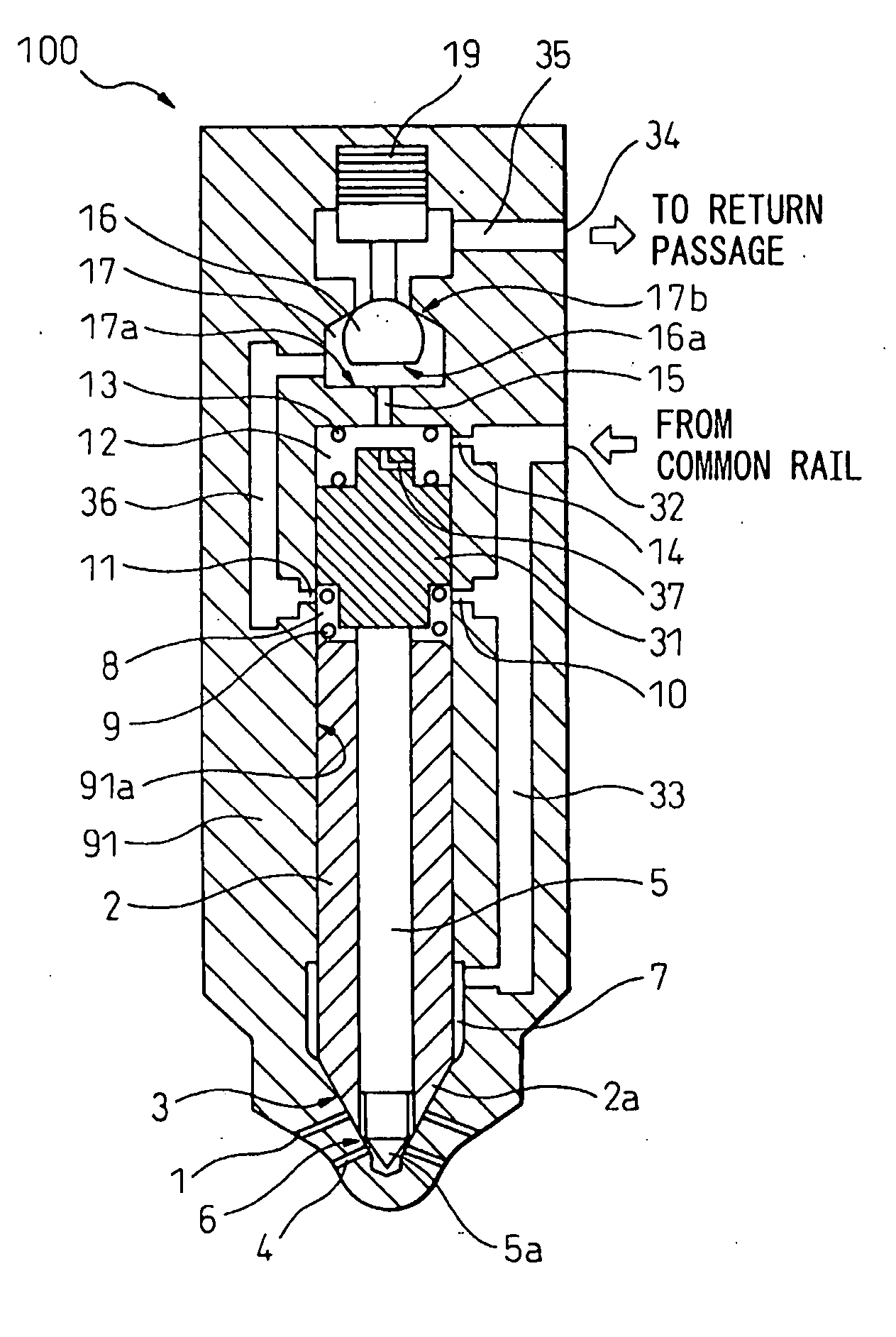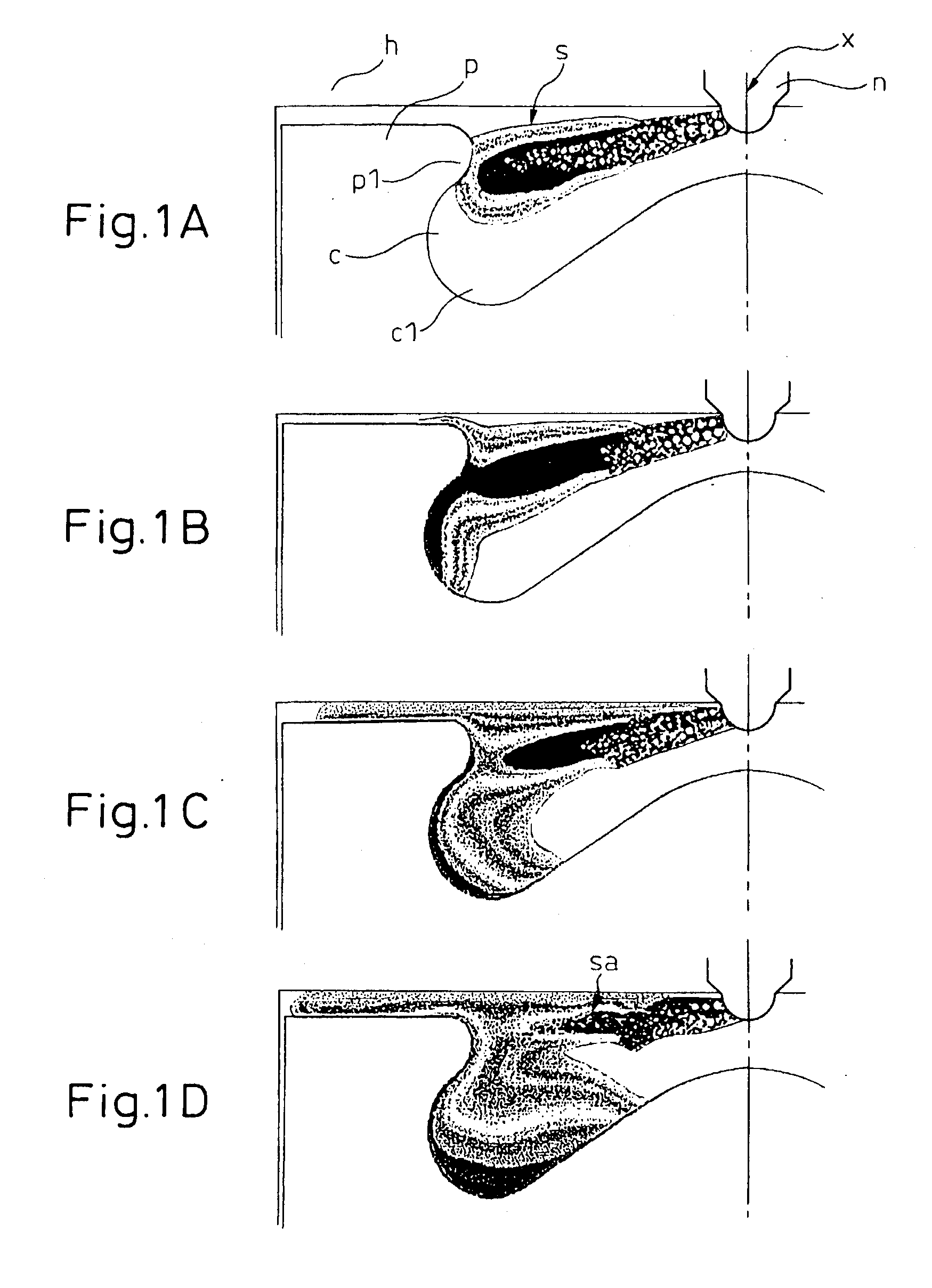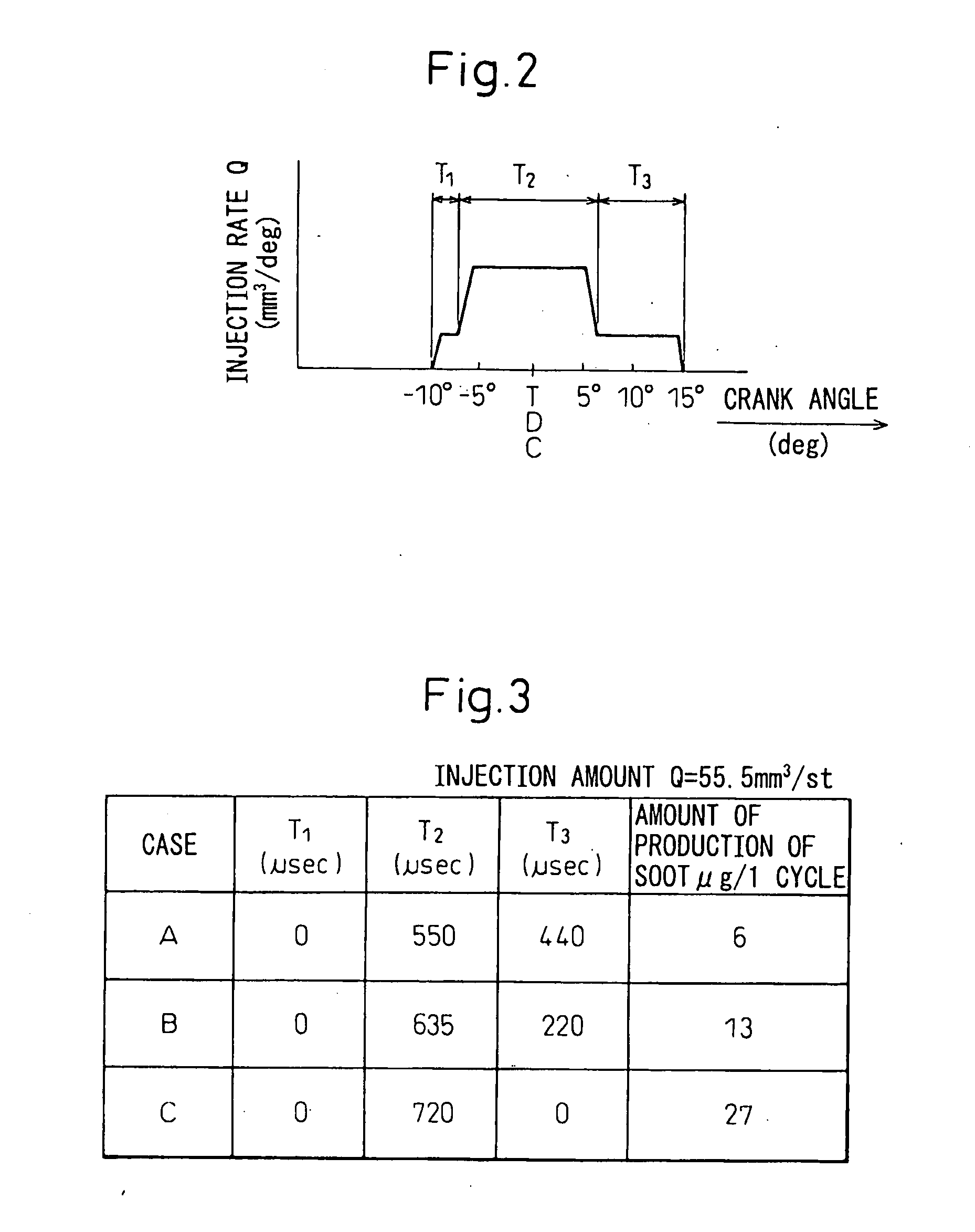Fuel Injection System of Internal Combustion Engine
a fuel injection system and internal combustion engine technology, applied in the direction of liquid fuel feeders, machines/engines, electric control, etc., can solve the problems of low actual injection pressure at the time of after injection, and insufficient reduction of emissions matched with engine operating conditions, so as to reduce emissions, reduce emissions, and reduce production
- Summary
- Abstract
- Description
- Claims
- Application Information
AI Technical Summary
Benefits of technology
Problems solved by technology
Method used
Image
Examples
first embodiment
[0069]FIG. 4 is a cross-sectional view of a first embodiment of the fuel injection system according to the present invention. At the time of noninjection when fuel is not injected as shown in FIG. 4, the amounts of lift of the injection port operating valves constituted by the first needle valve and the second needle valve become zero. In FIG. 4, 1 indicates first injection ports from which fuel is injected at the time of initial injection, main injection, and after injection, 2 indicates the first needle valve for opening / closing the first injection ports 1, and 3 is a first seat part where the first needle valve 2 is seated at the time the first needle valve 2 closes the ports. Reference numeral 4 indicates second injection ports from which fuel is injected at the time of main injection, 5 indicates a second needle valve arranged at the inside of the first needle valve 2 for opening / closing the second injection ports 4, 6 indicates a second seat part where the second needle valve ...
second embodiment
[0091] Next, a second embodiment of the fuel injection system according to the present invention will be explained. FIG. 9 is a sectional view of the second embodiment of the fuel injection system according to the present invention and is similar to FIG. 4 according to the first embodiment. The second embodiment basically differs from the first embodiment in that the lift lock piston is eliminated. The method of operation is the same as the first embodiment. As shown in FIG. 9, the cylinder part 91a of the valve body 91 is connected with the smaller inside diameter cylinder part 91b at the top side of the valve body. The second needle valve 5 is arranged to be able to freely slide inside the cylinder part 91b guided by the first needle valve 2.
[0092] The second embodiment, compared with the first embodiment, omits the lift lock piston, so is simplified in structure. The second control chamber 12 is small in inside diameter, so the fuel pressure of the second control chamber 12 caus...
third embodiment
[0093] Below, a third embodiment of the fuel injection system according to the present invention will be explained. FIG. 10 is a sectional view of the third embodiment of the fuel injection system according to the present invention and is similar to FIG. 4 according to the first embodiment. In the same way as in FIG. 4, this shows a noninjection state where the lift of the pressure control valve 16 is made zero and fuel is not injected. Note that in the first embodiment to the third embodiment, compared with the later explained fourth embodiment or fifth embodiment, at the time of start of the initial injection, the first injection ports open, then the second injection ports open, while at the time of start of after injection, the second injection ports close, then the first injection ports close. The third embodiment differs in basic structure from the first embodiment in that the control valve is a two-position valve, the position of the second outlet orifice is a separate positio...
PUM
 Login to View More
Login to View More Abstract
Description
Claims
Application Information
 Login to View More
Login to View More - R&D
- Intellectual Property
- Life Sciences
- Materials
- Tech Scout
- Unparalleled Data Quality
- Higher Quality Content
- 60% Fewer Hallucinations
Browse by: Latest US Patents, China's latest patents, Technical Efficacy Thesaurus, Application Domain, Technology Topic, Popular Technical Reports.
© 2025 PatSnap. All rights reserved.Legal|Privacy policy|Modern Slavery Act Transparency Statement|Sitemap|About US| Contact US: help@patsnap.com



